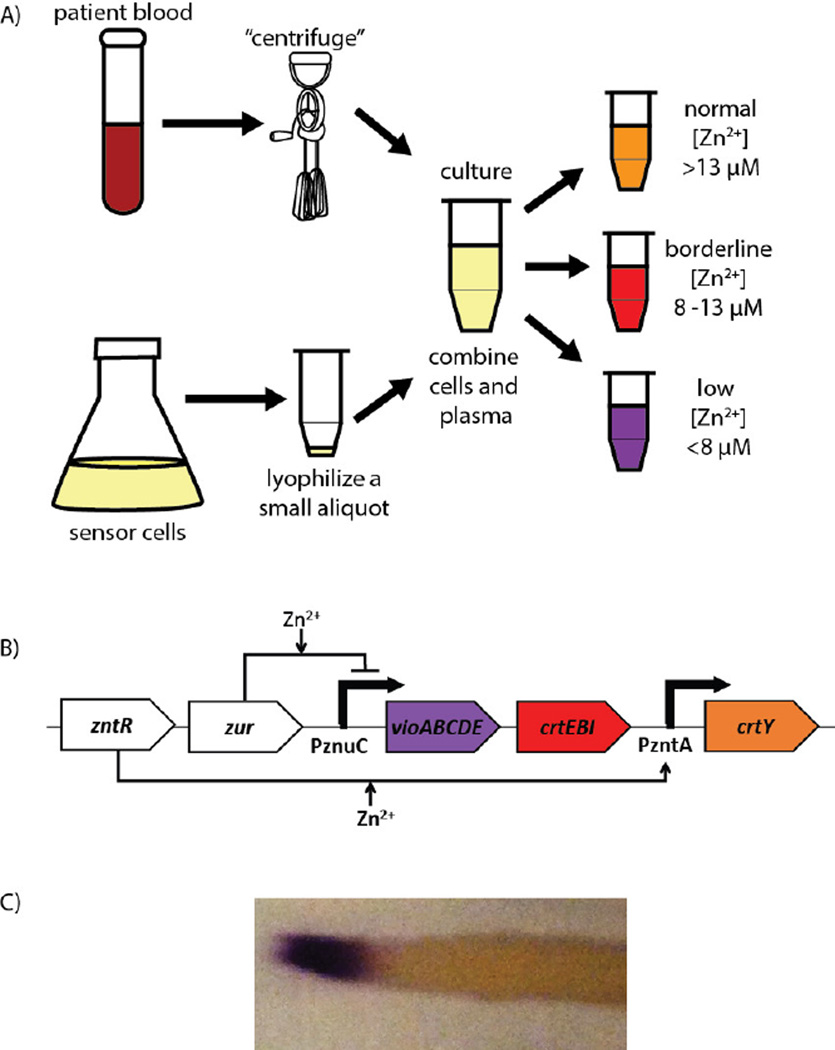Figure 1.
An initial synthetic biology-based zinc biosensor for application to equipment-free blood tests. A) A schematic of the workflow envisioned for the eventual final implementation of the diagnostic biosensor. Cells from general culture (bottom) are lyophilized for long-term storage. A blood sample (top) is centrifuged using an egg beater (Wong et al., 2008) to separate plasma, which is then added to the stored cells. These cells then produce pigment (right) based on the level of zinc in the plasma sample. Physiological concentrations of zinc are included for reference. B) Schematic of the circuit design intended for implementation of the initial biosensor. Transcriptional regulators ZntR and Zur are expressed on the same plasmid as the construct with violacein synthesis driven by the zinc-repressible PznuC promoter, lycopene synthesis driven by a weak promoter, and the gene catalyzing the transformation of lycopene to β-carotene driven by the zinc-inducible PzntA promoter. The bolded zinc annotation for PzntA indicates that activation by zinc happens at higher concentrations than for pZnuC. C) Streak from a zinc gradient plate demonstrating direct transition from purple to orange without an intervening lycopene-dominated, red state. (Image contrast was adjusted to reduce the background from the agar plate; the original image is included as Supplementary Figure 1.)

